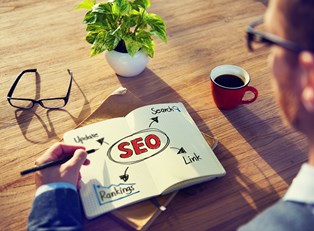You’ve seen the term "SEO" thrown around the internet, and after a little research, you’re ready to revamp your business’s website. But wait—there’s something else you need to know about. SEM, or search engine marketing, not only includes SEO techniques, but other methods of advertising your site.
What’s the difference between SEO and SEM?
Don’t think of the two as separate concepts. Search engine optimization is a type of search engine marketing; SEM is a broader category and SEO marketing is a particular method. The most notable distinction between the two would be how they bring traffic to your website.
SEO marketing tactics, such as gaining backlinks from credible sites and appropriately using keywords, drives user traffic through organic methods. While some people spend money on consultants or paid services, with the right programs at your disposal, you can make your site SEO friendly for free. However, these methods are not as directed as paid marketing. Think of it this way: organic search engine optimization is like throwing out a net and hoping to catch fish. When you’re doing paid SEM, you’re fishing with bait. With SEO, you’re hoping your site ranks well as a result of your changes; with other SEM options, you’re paying to ensure it appears as an ad.
Where to begin…
Search engine marketing is fairly broad. Aside from SEO, other SEM strategies include sponsored listings, social media marketing, and paid advertisements. When considering avenues of search marketing, you certainly need to create a budget.
Google AdWords is going to be one of the most important services you’ll utilize. Through AdWords, you can buy advertisements which appear on Google search results for related content. Not only that, but you can also choose for your ad to show up on mobile view or other sites in the Google network. Unlike some SEO services that charge a flat monthly or yearly fee, you’ll determine how much you’re willing to spend on ads. Cost-per-click advertising, the prime choice for directing traffic to your page, relies on a plethora of factors, but to start, think about two things: your daily budget and your maximum bid. And as the name implies, you’re only charged when users click on your advertisement.
Advertisers bid on relevant keywords, setting the maximum price they are willing to pay each time a user clicks on their ad. A higher maximum bid increases your chances of ranking higher on ad results, but depending on the quality of your competitors’ ads, you may rank above others even with a lower max bid.
Let’s say your maximum bid is $1 a click, and your daily budget is $30 dollars. Tons of people see the ad, but only fifteen people click; at most, you pay $15 for those fifteen clicks. Now, you don’t always pay your maximum bid per click. You end up paying the minimum amount necessary to keep your spot and bid above your competitor.



